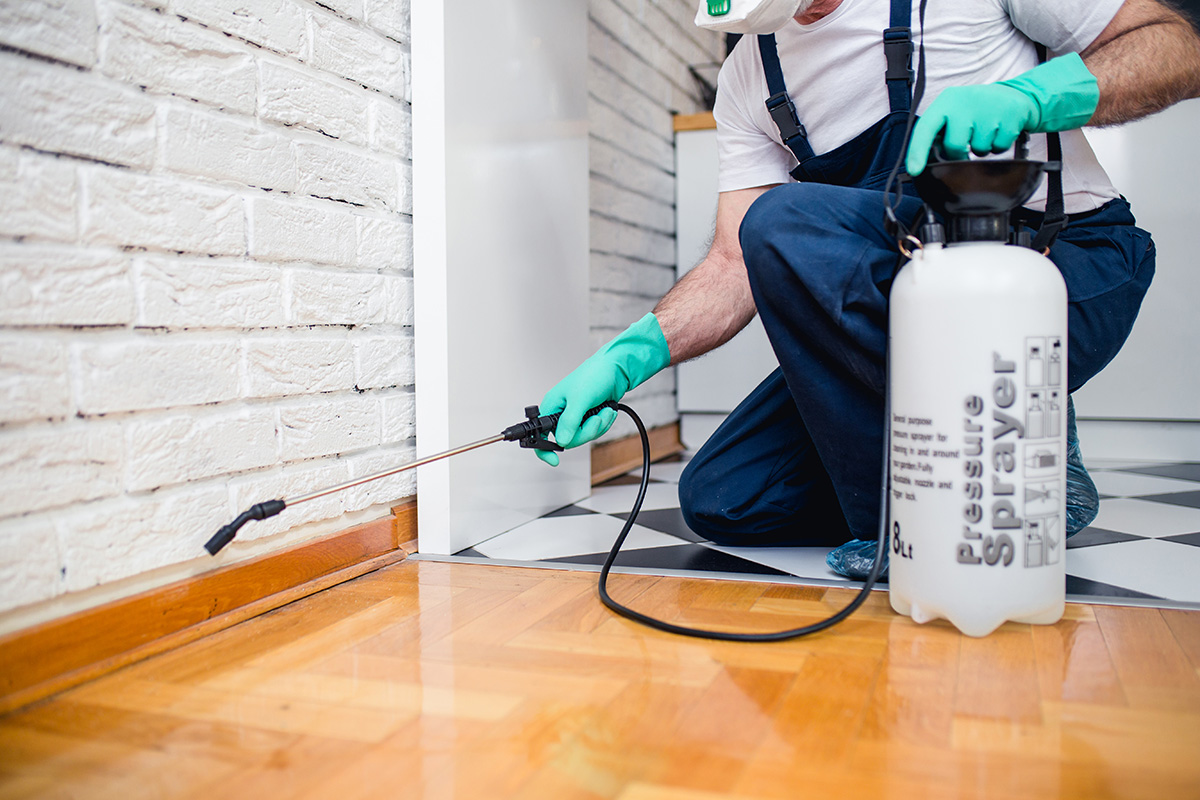Bed Insect Therapy Breakdown: Contrasting Chemical Vs. Non-Chemical Solutions
In the realm of pest control, specifically when taking care of the consistent problem of bed bugs, the choice between chemical and non-chemical therapy solutions can be a critical one. Both techniques use distinct advantages and drawbacks, affecting aspects such as performance, safety and security considerations, and general expense. By checking out the nuanced details of each approach, a clearer understanding of which course to seek in resolving a bed bug infestation can be attained.
Performance of Chemical Therapies
Chemical therapies for bed pest problems have actually been commonly identified for their potent and rapid effectiveness in eradicating these parasites. When taking into consideration the efficiency of chemical therapies, it is important to understand that they can supply a extensive and fast option to a bed bug issue.
Moreover, chemical treatments have the benefit of providing recurring results, implying that they can remain to get rid of bed insects also after the preliminary application. This recurring activity is especially beneficial in combating any prospective re-infestations. Additionally, the rapid activity of chemical treatments can bring alleviation to individuals encountering severe bed pest problems, permitting them to gain back control of their home swiftly.
Security Interest In Chemical Solutions
When making use of chemical services for bed pest treatment is making certain the security of occupants and the atmosphere,One vital element that requires careful factor to consider. While chemical therapies can be reliable in eradicating bed insects, they may posture dangers otherwise taken care of correctly. Among the main security concerns with chemical services is the possible injury they can trigger to human health. Exposure to particular chemicals made use of in bed insect treatments can cause respiratory system problems, skin irritability, or various other damaging reactions, especially in individuals with pre-existing problems or level of sensitivities. Additionally, inappropriate application or dosage of chemical pesticides can lead to harmful residues remaining in the treated location, posturing long-lasting wellness dangers to passengers.
Additionally, the environmental impact of chemical solutions is another significant consideration. Some pesticides used in bed bug treatments might be damaging to advantageous bugs, wildlife, and ecosystems if they leach into the soil or water systems. It is crucial to utilize chemical therapies judiciously, adhering to security guidelines, and thinking about less hazardous choices to reduce these dangers and ensure the safe and reliable management of bed bug infestations.
Advantages of Non-Chemical Strategies
Taking into consideration the potential safety problems and environmental influence linked with chemical options for bed pest therapy, discovering non-chemical strategies offers an appealing alternative with several distinctive advantages. Non-chemical therapies click for info are environmentally friendly, as they do not contribute to air or water air pollution, making them a lasting option for bug control.
In addition, non-chemical solutions can be efficient in targeting bed bugs, consisting of hard-to-reach locations where chemical treatments might not permeate - A1 exterminators charlotte nc. Methods such as heat treatment, vacuuming, vapor cleaning, and mattress coverings supply detailed eradication without the usage of unsafe chemicals.
Limitations of Non-Chemical Treatments

In addition, non-chemical treatments frequently need several applications to attain effective elimination. This can be lengthy and might not constantly assure complete elimination of all bed pests and their eggs, particularly in covert or hard-to-reach locations.
Moreover, the success of non-chemical treatments heavily relies upon appropriate execution and thoroughness, which can be testing for individuals without expert competence. Inadequate application of non-chemical approaches might cause incomplete obliteration, bring about persistent invasions and the need for extra treatments.
Consequently, while non-chemical therapies have their advantages, it is important to recognize these limitations and consider them when identifying the most effective strategy for managing bed pest problems.
Cost Contrast: Chemical Vs. Non-Chemical Options
Provided the restrictions linked with non-chemical therapies, an important facet to examine in the context of bed pest monitoring is the price comparison pop over here between chemical and non-chemical options. In comparison, non-chemical therapies like heat therapy or vapor can be a lot more pricey, with prices ranging from $1,000 to $6,000 for an entire home. While the preliminary price of chemical treatments might seem reduced, numerous treatments may be called for to totally get rid of the problem, potentially increasing the overall expense.
Final Thought

Taking into consideration the prospective safety concerns and environmental impact linked with chemical solutions for bed pest therapy, exploring non-chemical approaches provides an appealing option with numerous distinct benefits.Given the restrictions connected with non-chemical therapies, an essential facet to assess in the context of bed insect management is the price comparison in between chemical and non-chemical alternatives. In comparison, non-chemical therapies like heat therapy or vapor can be a lot more expensive, with costs ranging from $1,000 to $6,000 for an entire home. While the initial cost of chemical therapies might appear lower, numerous therapies might be needed to completely get rid of the problem, potentially increasing the total expense.In conclusion, when comparing chemical and non-chemical bed insect treatment options, it is essential to consider effectiveness, safety, advantages, constraints, and cost.
Comments on “A1 Bed Bug Exterminator Charlotte - Reliable and Economical Services”